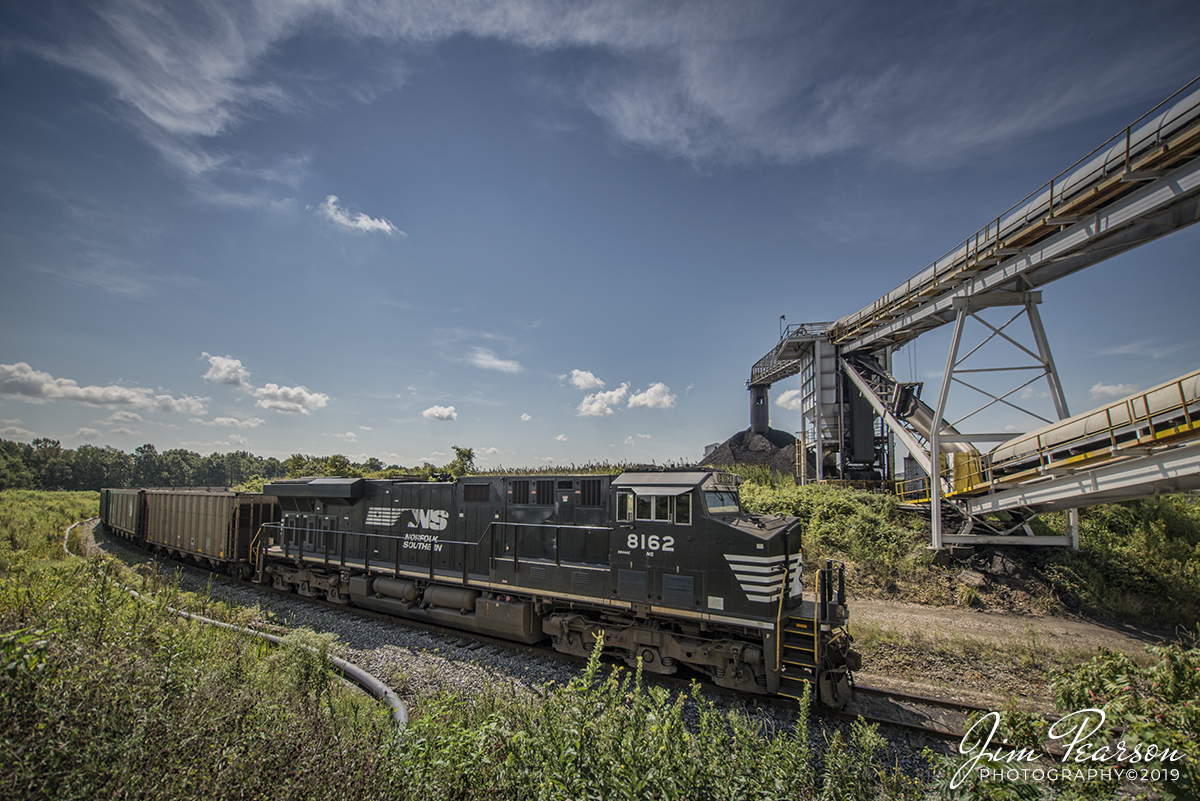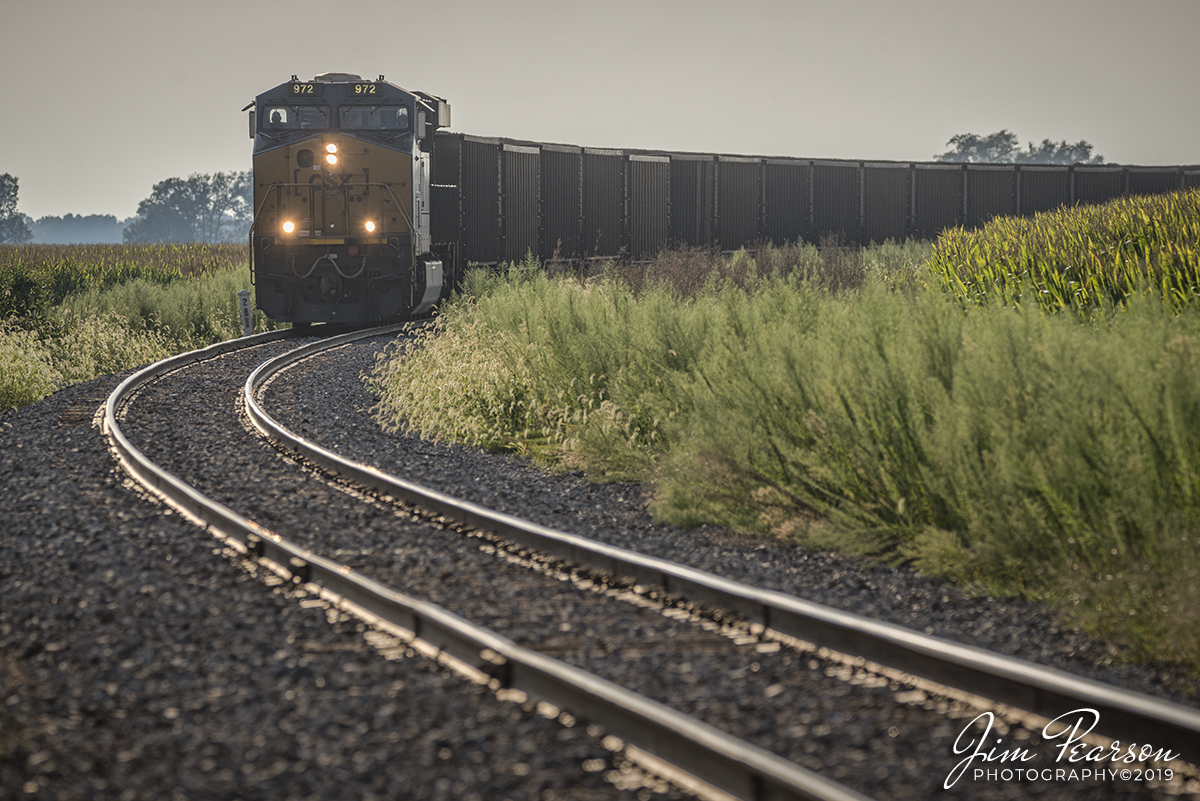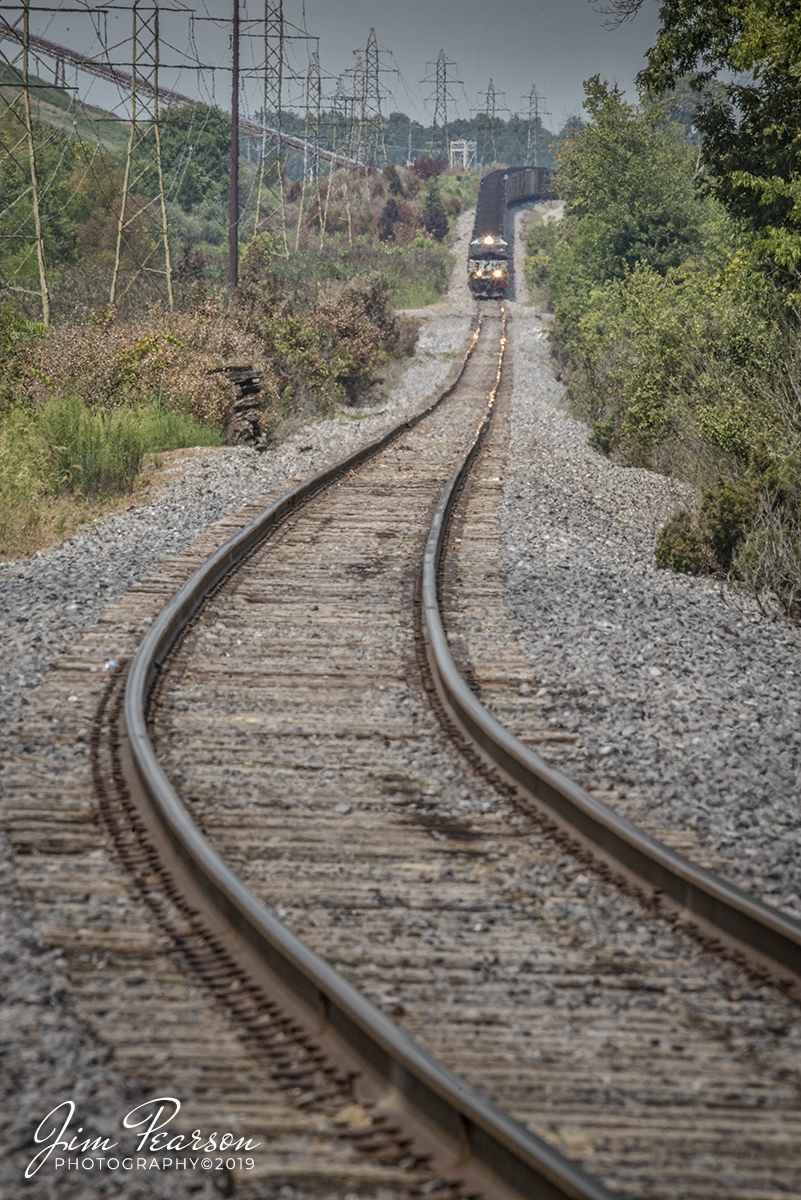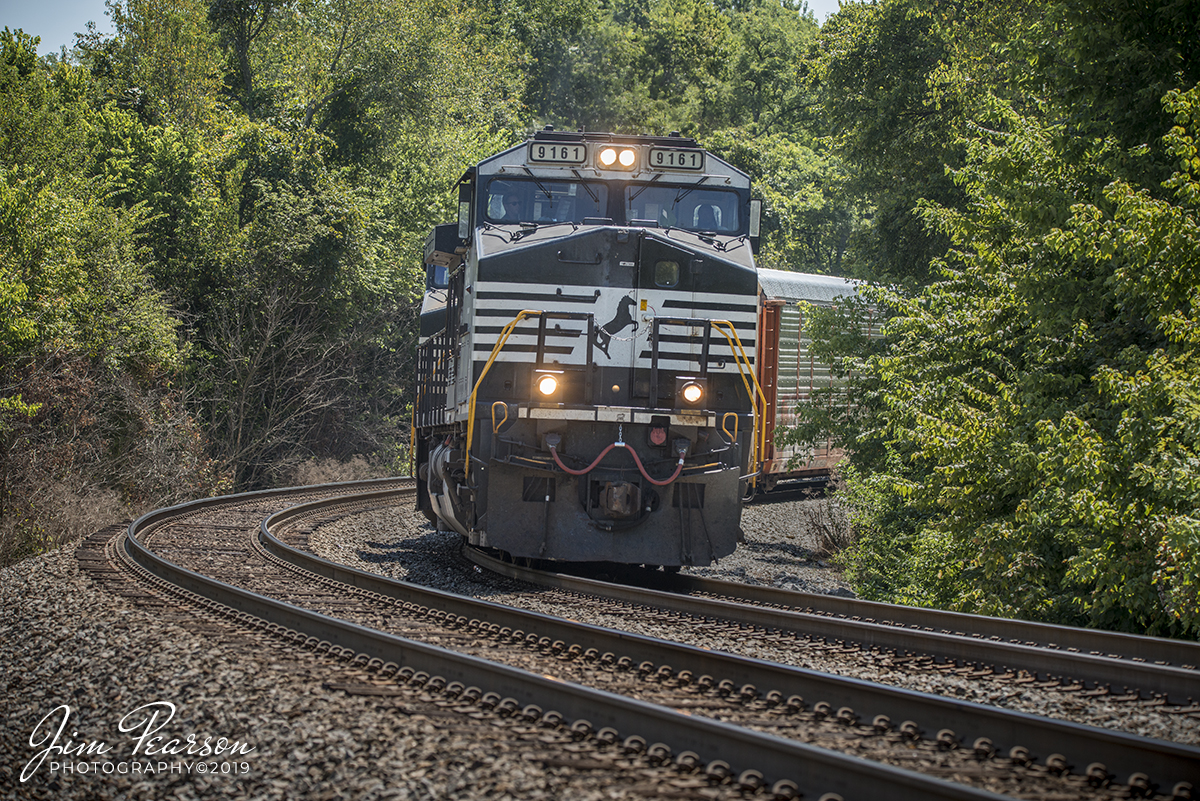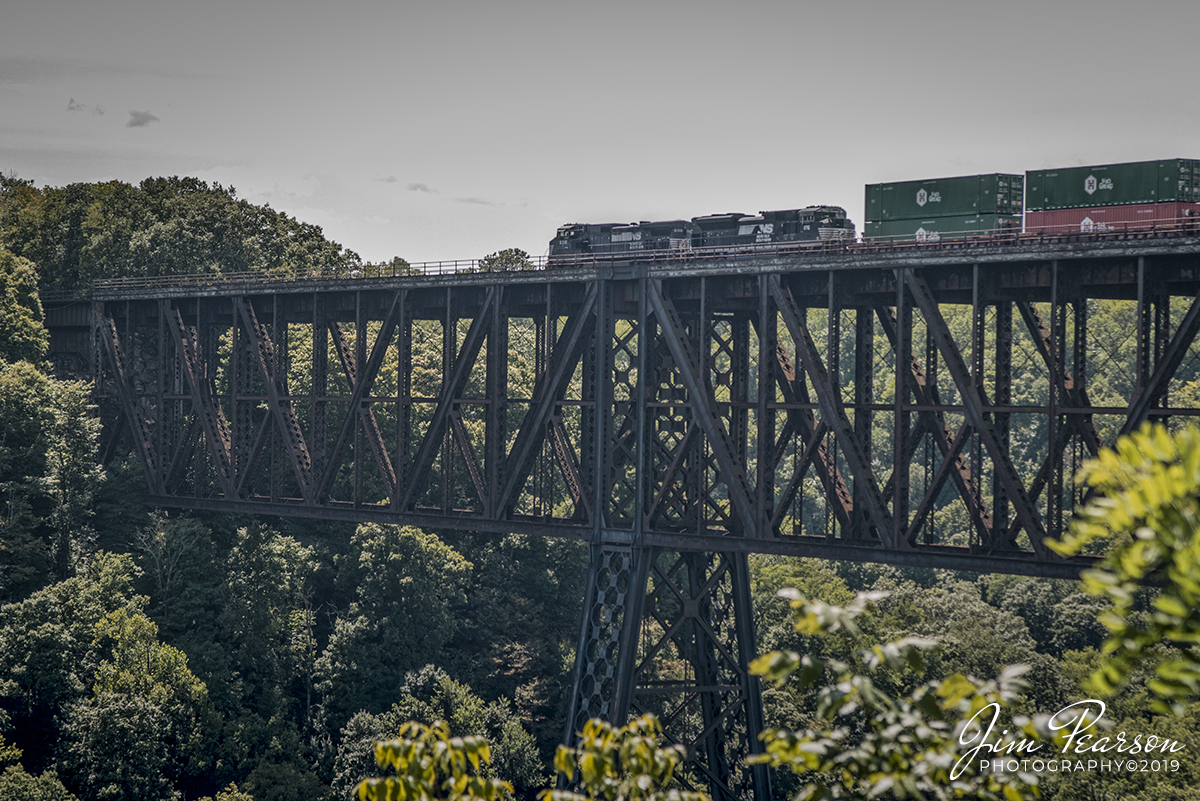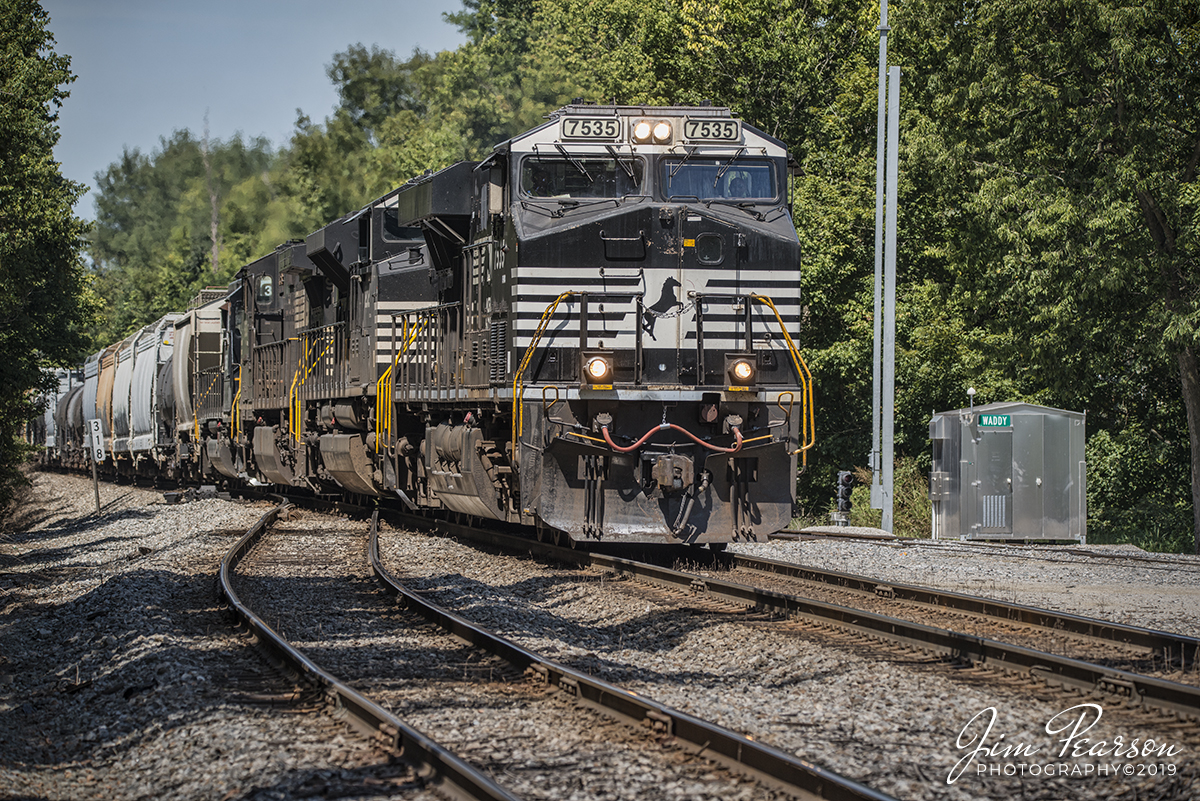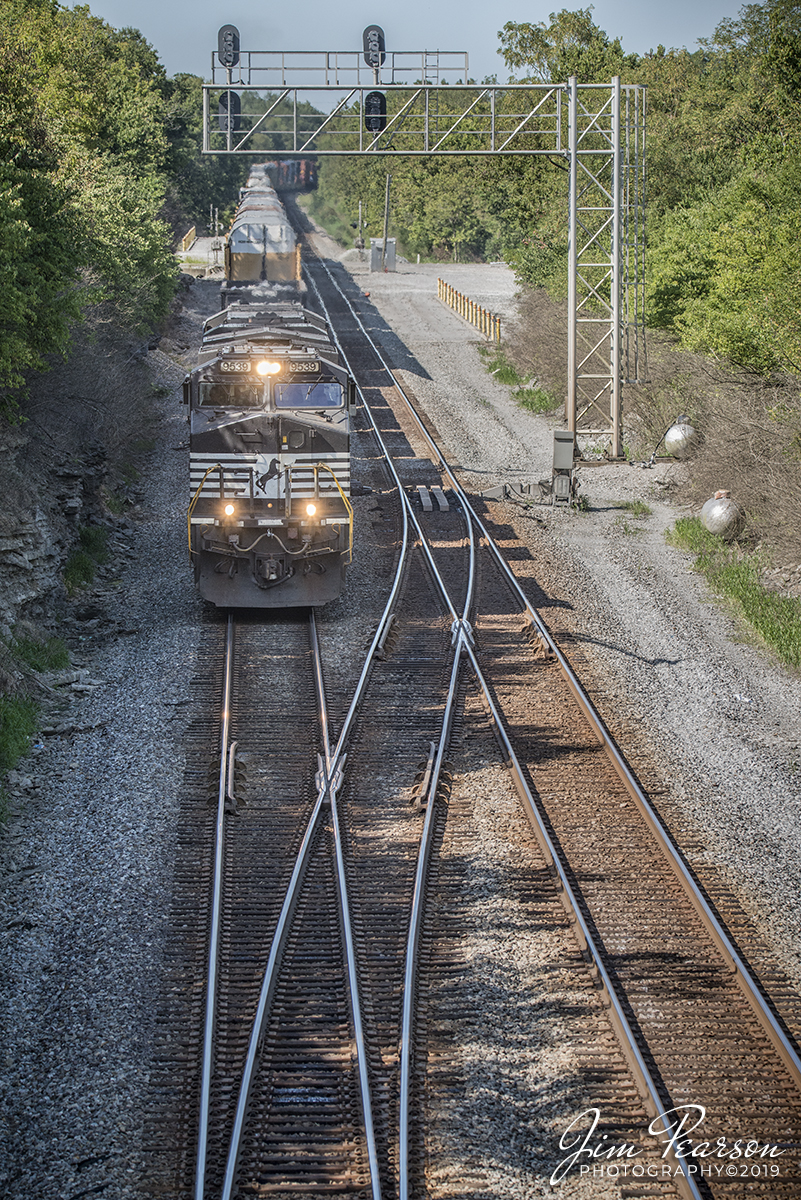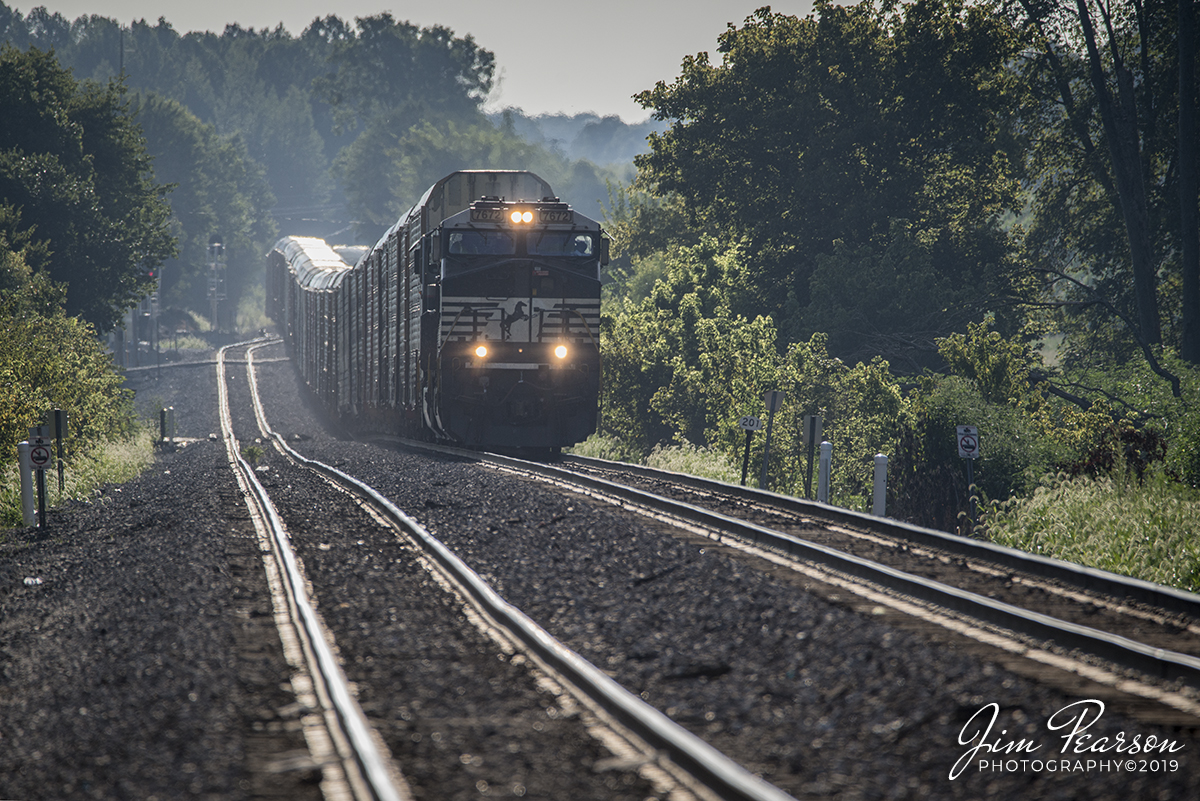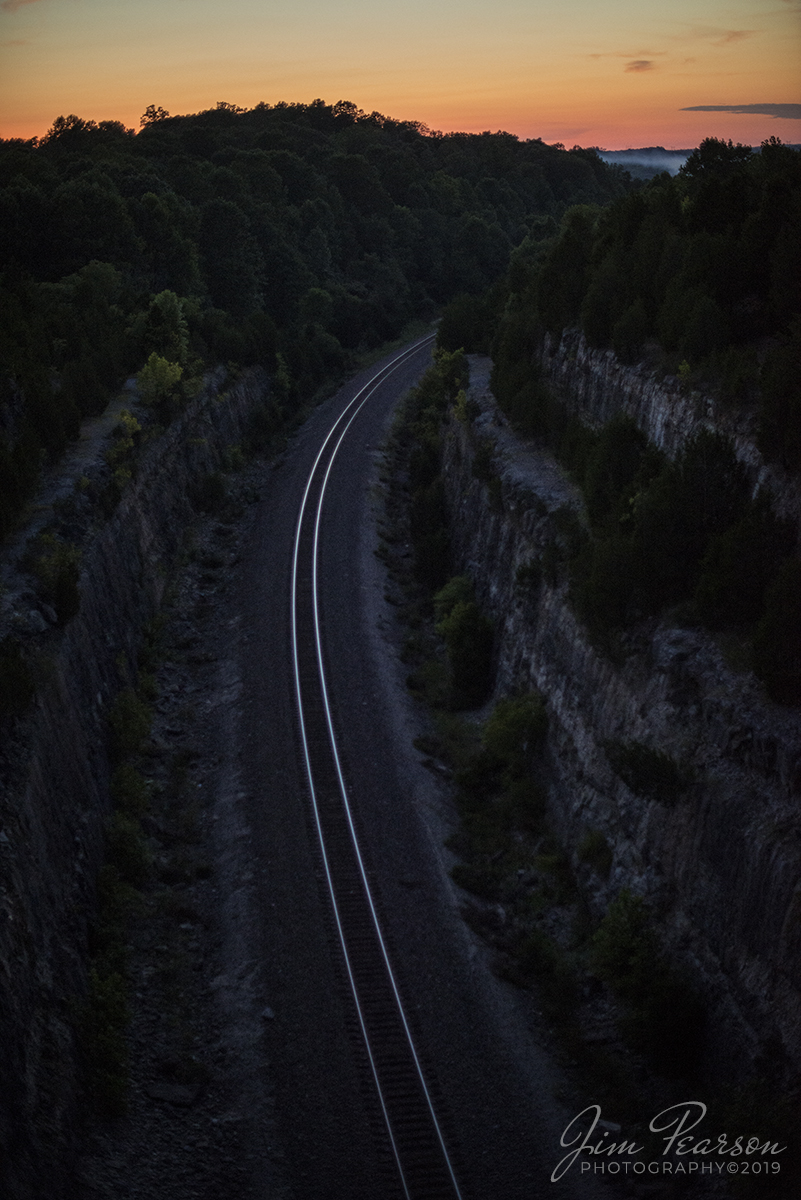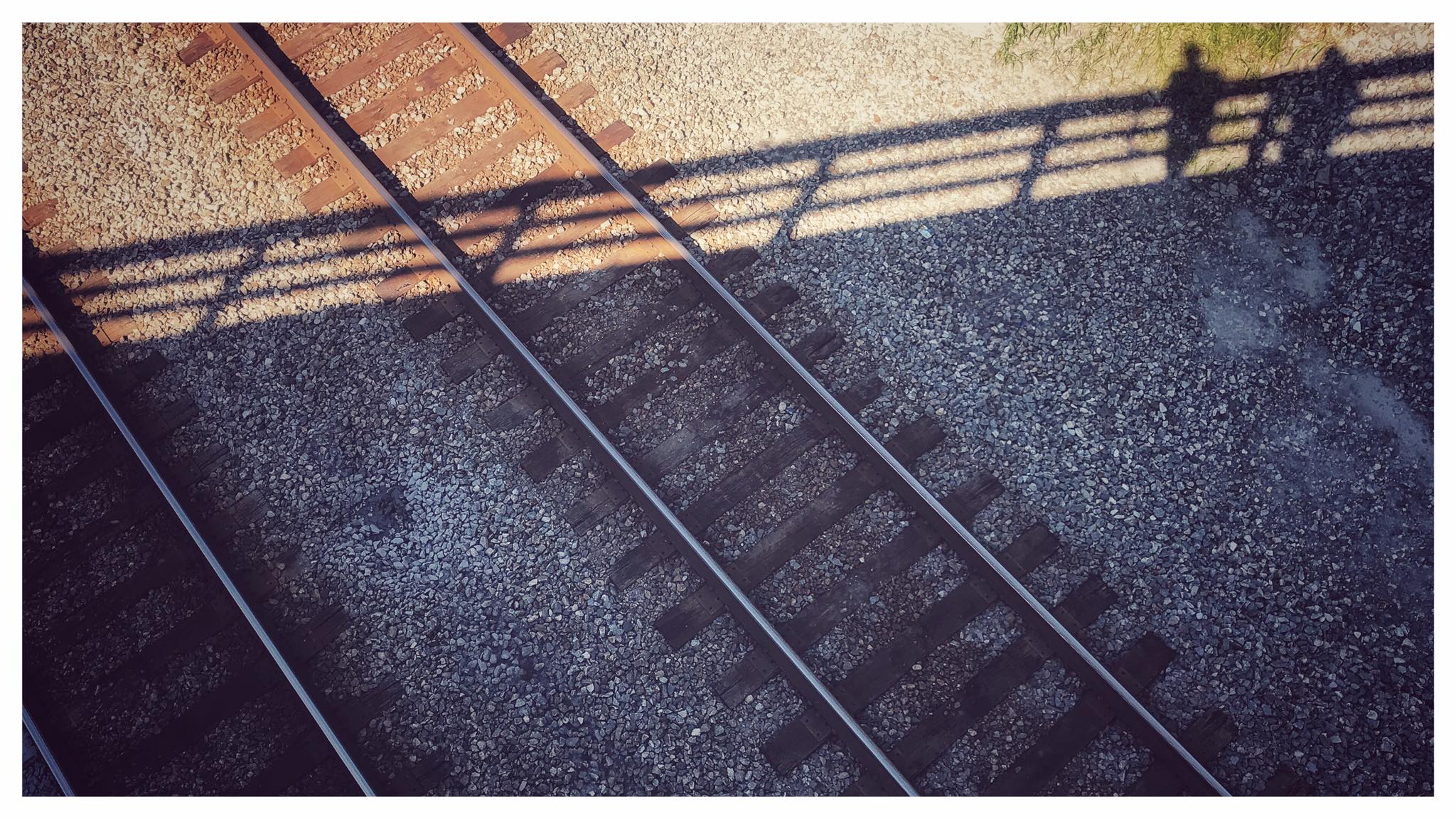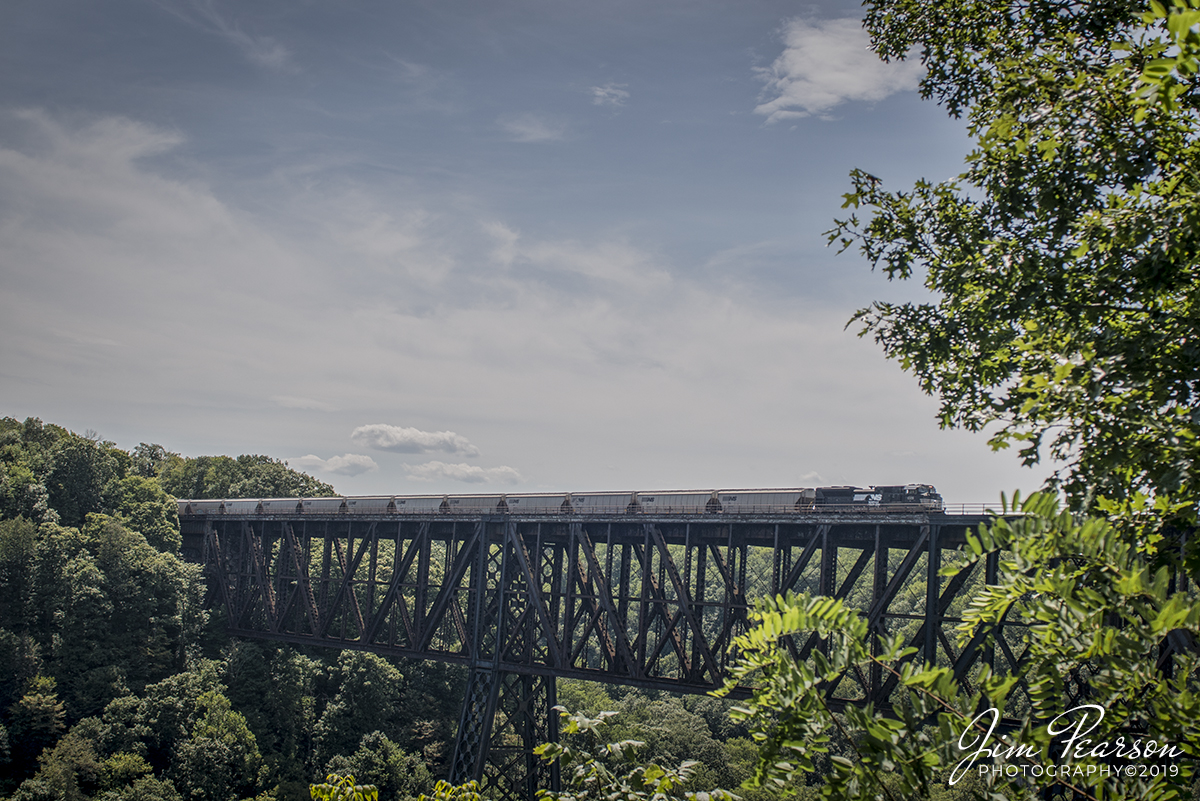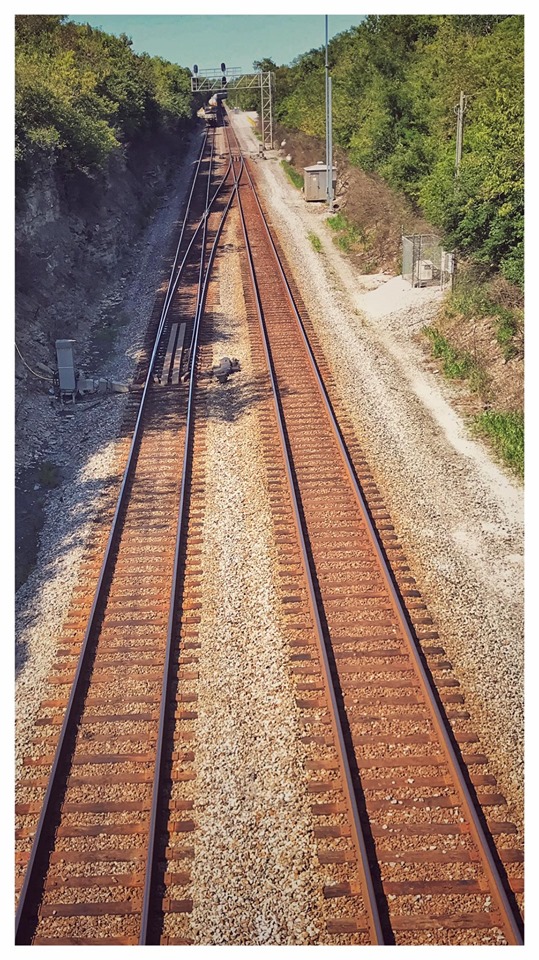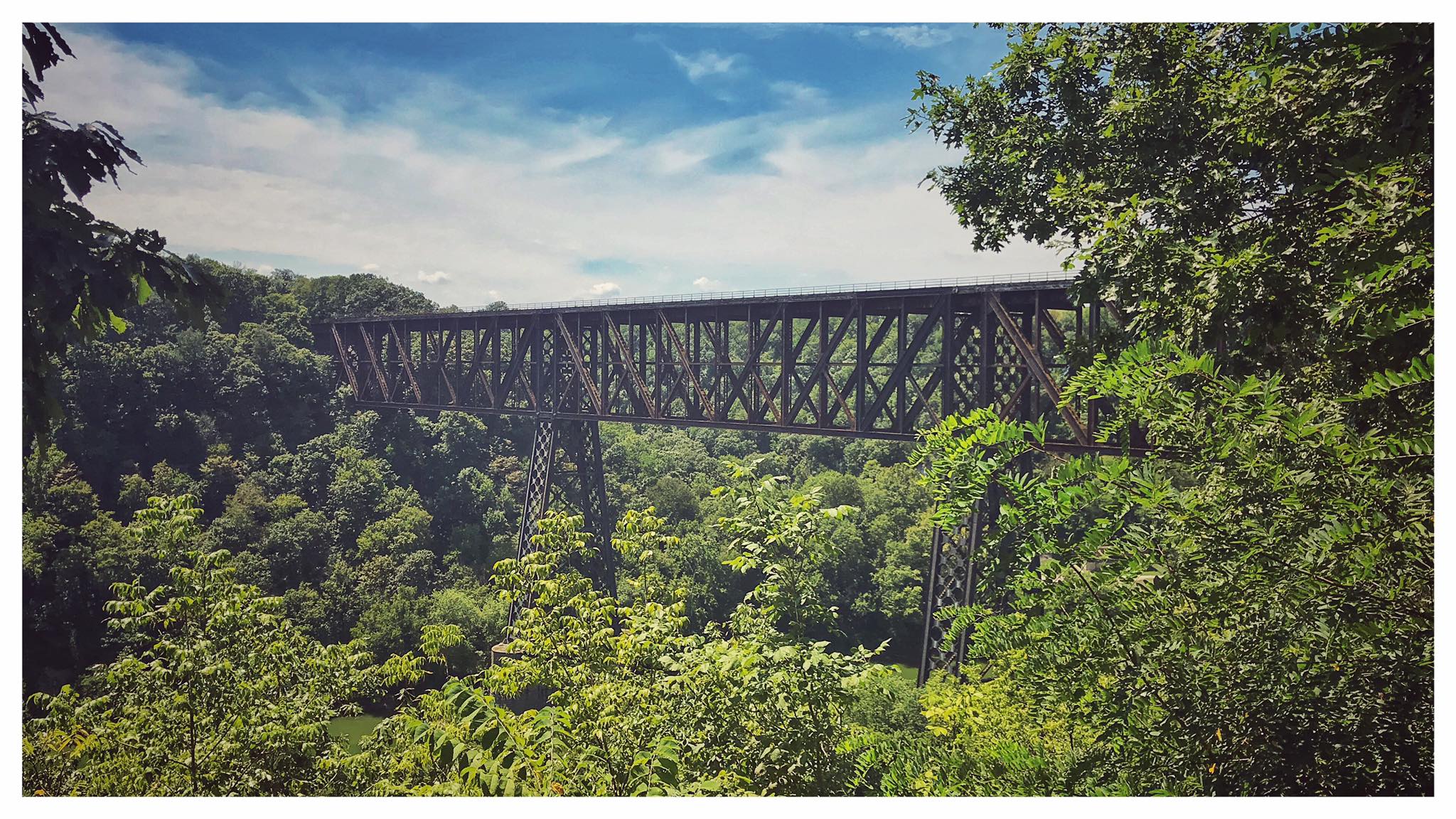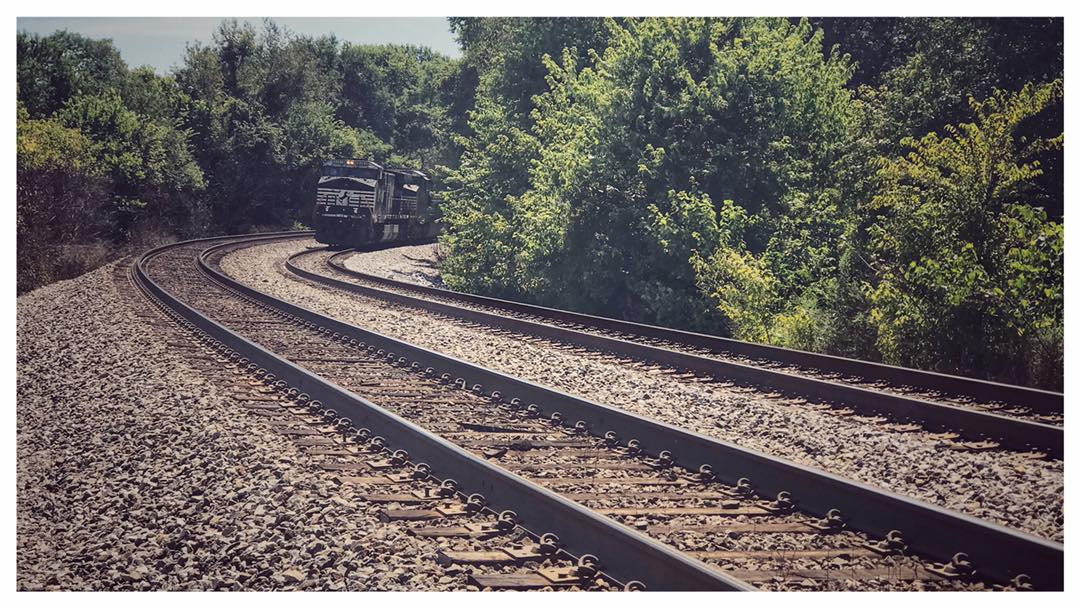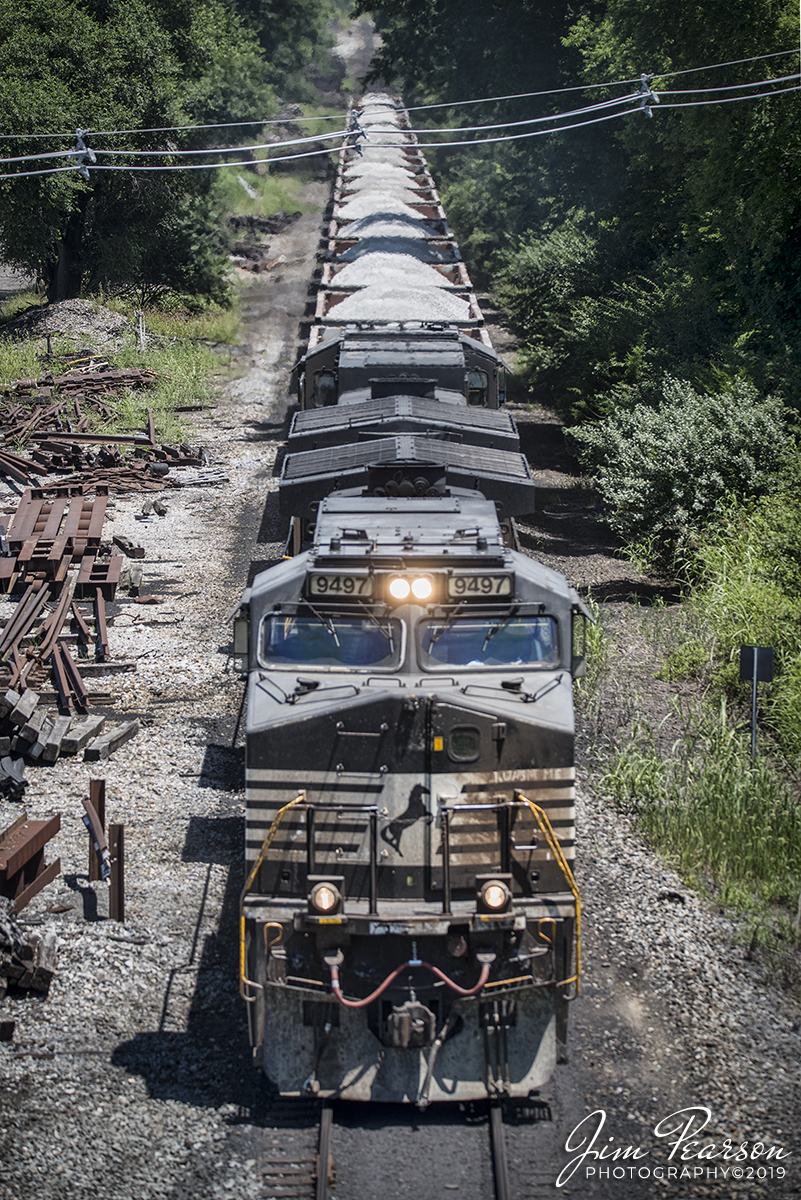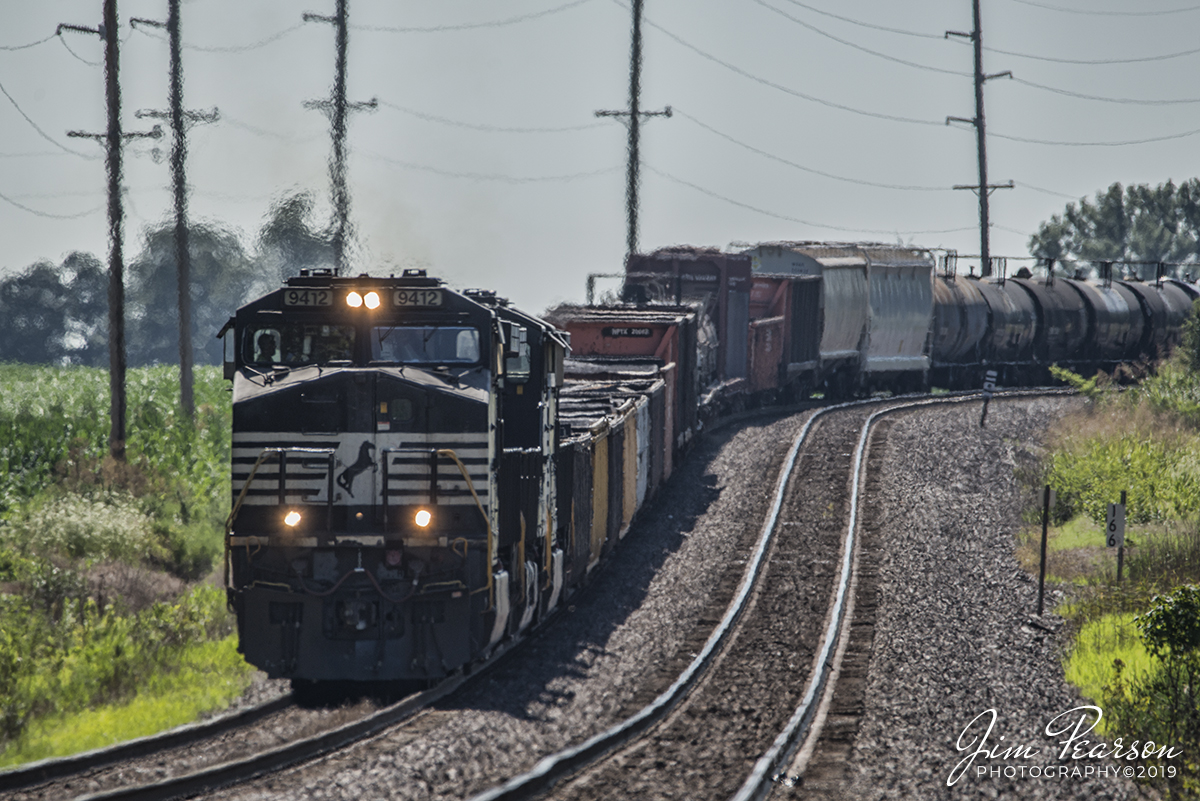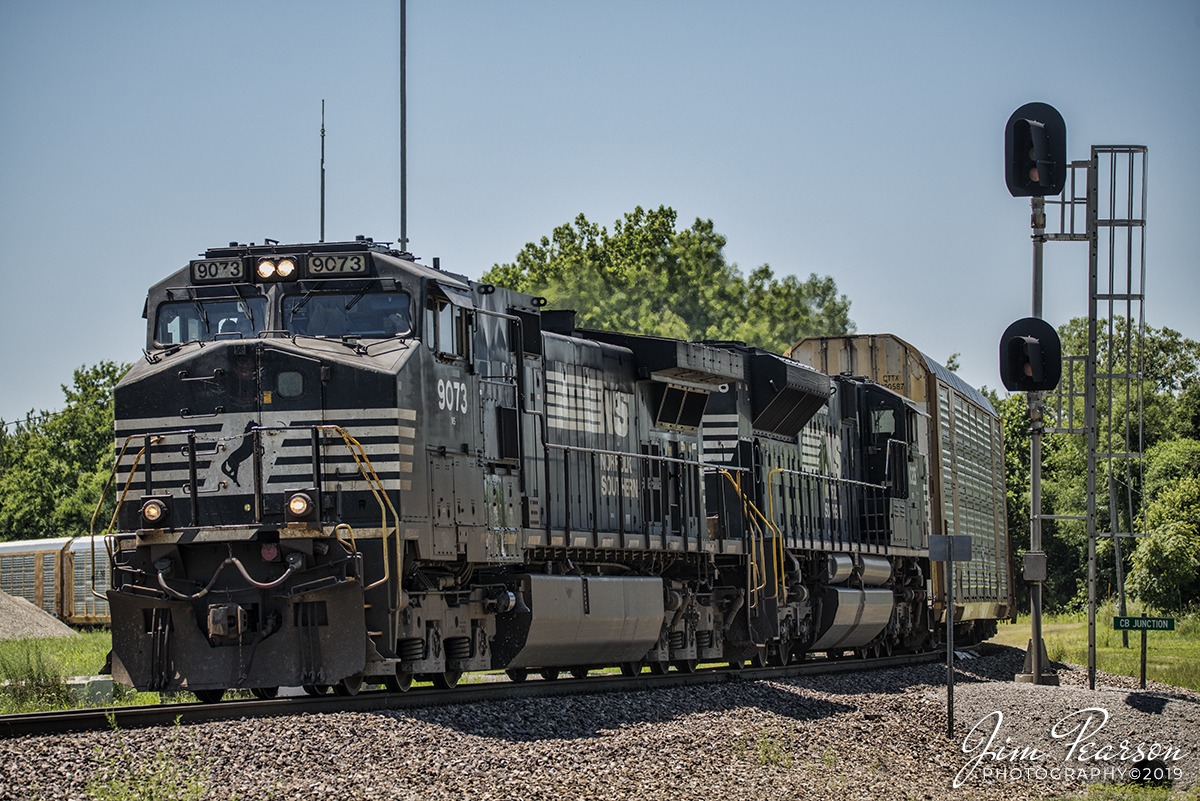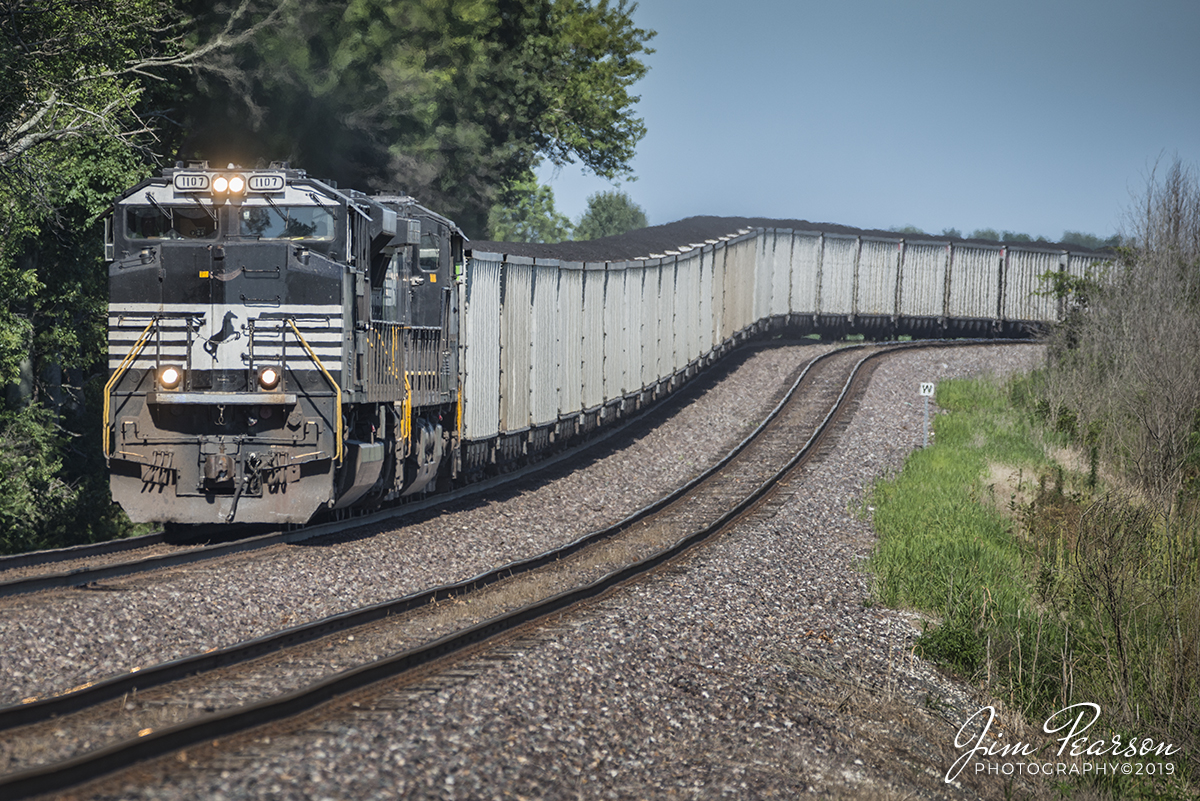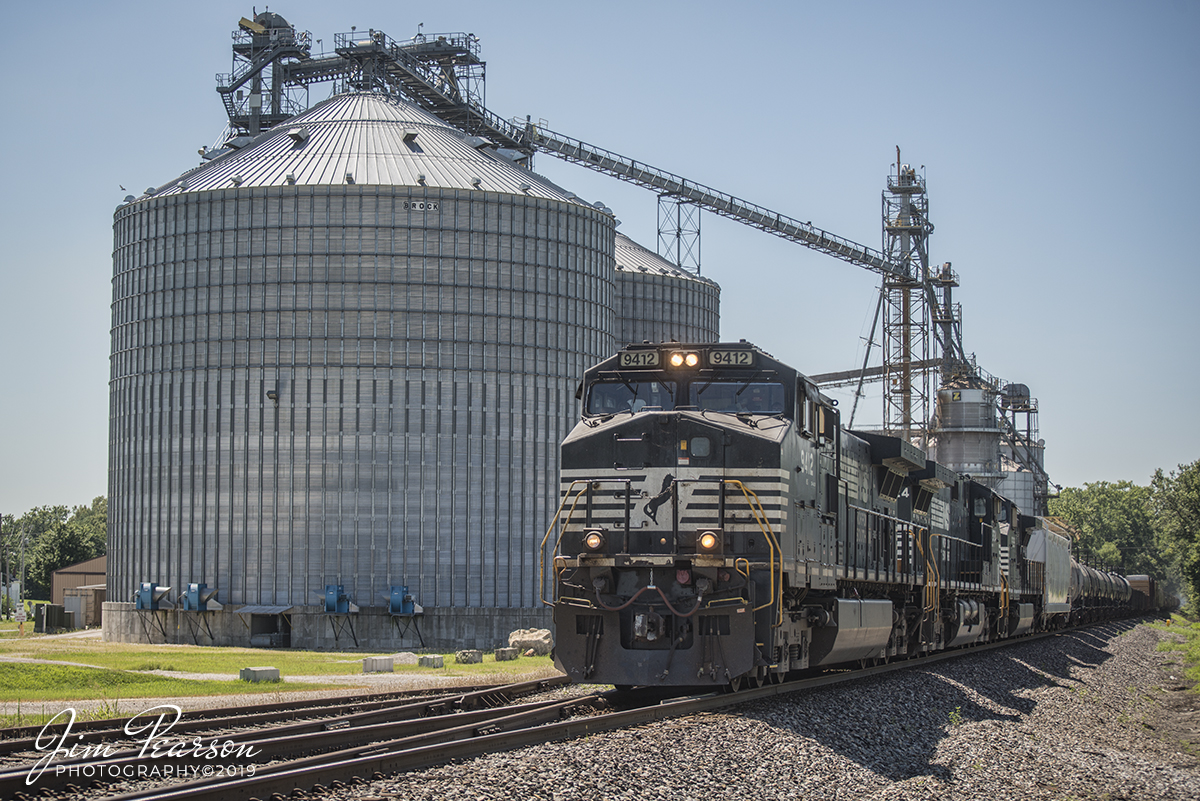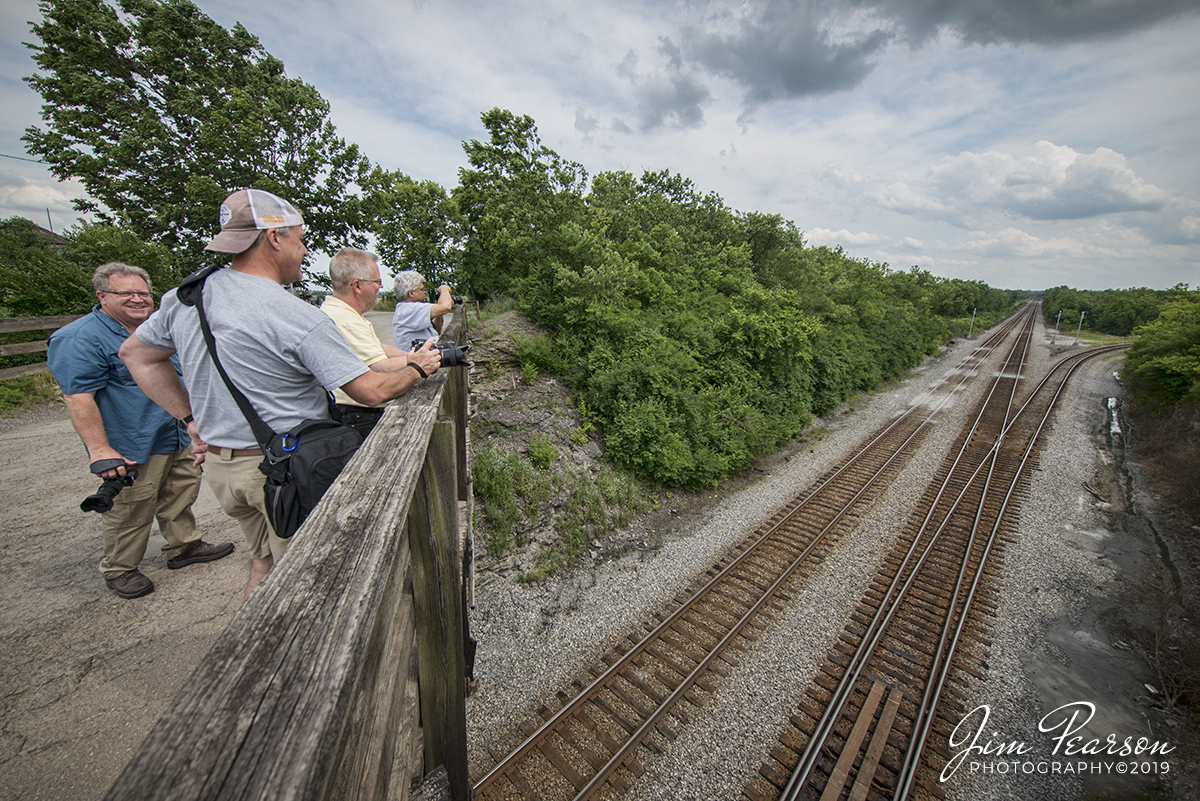August 17, 2019 – Norfolk Southern 8162 brings up the rear of WYX1 as the trains DPU, passing under the beltline at Warrior Coal outside Nebo, Kentucky as it finishes loading its coal train bound for the Paducah and Louisville Railway and points north.
CSXT 972 leads a load of 75 coal cars on J800-16…
August 17, 2019 – CSXT 972 leads a load of 75 coal cars on J800-16 as they round the curve coming approaching the Happy Lane Crossing on the Morganfield Branch at Manitou, Kentucky. This one of the last trains to pickup a load of coal from Dotki Mine in Clay, Ky since it ceased operations on August 14th, 2019.
Norfolk Southern WYX1 craws downgrade…
August 17, 2019 – Norfolk Southern WYX1 craws downgrade on the Warrior Lead is it departs Warrior Coal with a loaded coal train bound for the Paducah and Louisville Railway and points north.
Norfolk Southern 9161 leads a empty autorack…
August 10, 2019 – Norfolk Southern 9161 leads a empty autorack as it pulls out of the siding at the west end of Waddy, Ky as it heads west on the Louisville District.
Norfolk Southern engine 9318 leads a intermodal…
August 10, 2019 – Norfolk Southern engine 9318 leads a intermodal across the NS cantilever bridge over the Kentucky River at High Bridge, Kentucky as it heads south on the CNO&TP First District, also known as the Rathole.
Norfolk Southern 7335 leads NS 273…
August 10, 2019 – Norfolk Southern 7335 leads NS 273 as it passes through the west end of Waddy, Ky on its way east on the Louisville District.
After picking up a fresh crew, Norfolk Southern 9539 leads…
August 10, 2019 – After picking up a fresh crew, Norfolk Southern 9539 leads a mixed freight as it pulls away from the CP North Wye, on it’s way south from the NS CNO&TP First District, north of Danville, Kentucky.
Norfolk Southern empty autorack train 276…
August 10, 2019 – Norfolk Southern empty autorack train 276 passes through the east end of Huntingburg, Indiana as it heads to Princeton, Indiana on the NS Southern-East District to drop off the empty cars for Toyota. Can’t tell it from this shot, but the trailing unit is NS Unit 8101, Central of Georgia heritage unit. When shooting your pictures, don’t get hung up on what everyone else considers the “best light or the “correct side.” I always go for what view I feel make the best picture!
The last light of day illuminates the rails…
August 10, 2019 – The last light of day illuminates the rails that cut through Tunnel Hill at Depauw, Indiana on the NS Southern-East District.
Fellow railfan Ryan Scott and I cast shadows…
August 10, 2019 – Fellow railfan Ryan Scott and I cast shadows as we wait on a train north of Danville, Kentucky.
Norfolk Southern engine 1029 leads a grain train…
August 10, 2019 – Norfolk Southern engine 1029 leads a grain train north across the NS cantilever bridge over the Kentucky River at High Bridge, Kentucky from the CNO&TP First District.
According to Wikipedia: High Bridge is a railroad bridge crossing the Kentucky River Palisades, that rises approximately 275 feet from the river below and connects Jessamine and Mercer counties in Kentucky. Formally dedicated in 1879, it is the first cantilever bridge constructed in the United States. It has a three-span continuous under-deck truss used by Norfolk Southern Railway to carry trains between Lexington and Danville. It has been designated as a National Civil Engineering Landmark.
In 1851, the Lexington & Danville Railroad, with Julius Adams as Chief Engineer, retained John A. Roebling to build a railroad suspension bridge across the Kentucky River for a line connecting Lexington and Danville, Kentucky west of the intersection of the Dix and Kentucky Rivers. In 1855, the company ran out of money and the project was resumed by Cincinnati Southern Railroad in 1873 following a proposal by C. Shaler Smith for a cantilever design using stone towers designed by John A. Roebling (who designed the Brooklyn Bridge).
The bridge was erected using the cantilever design with a three-span continuous under-deck truss and opened in 1877 on the Cincinnati Southern Railway. It was 275 feet (84 m) tall and 1,125 feet (343 m) long: the tallest bridge above a navigable waterway in North America and the tallest railroad bridge in the world until the early 20th century. Construction was completed using 3,654,280 pounds of iron at a total cost of $404,373.31. In 1879 President Rutherford B. Hayes and Gen. William Tecumseh Sherman attended the dedication.
After years of heavy railroad use, the bridge was rebuilt by Gustav Lindenthal in 1911. Lindenthal reinforced the foundations and rebuilt the bridge around the original structure. To keep railroad traffic flowing, the track deck was raised by 30 feet during construction and a temporary trestle was constructed. In 1929, an additional set of tracks was built to accommodate increased railroad traffic and the original limestone towers were removed.
The bridge is still accessible by Kentucky State Route 29. In 2005 the state and county jointly reopened a park near the bridge (which had been closed since the mid 1960s) at the top of the palisades above the river. It included a restored open air dance pavilion, first used in the 19th century; as well as a new playground, picnic area, and viewing platform that overlooks the bridge and river’s edge from the top of the palisades.
Waiting on a meet at the Buster Pike overpass…
August 10, 2019 – Waiting on a meet at the Buster Pike overpass, North of Danville, Kentucky.
Waiting on a train at the NS Bridge at High Bridge, KY
August 10, 2019 – Waiting on a train at the NS Bridge at High Bridge, KY.
Waiting on a meet at Waddy, KY
August 10, 2019 – Waiting on a meet at Waddy, KY on the NS Louisville District.
NS 3558 leads local P83…
July 24, 2019 – NS 3558 leads local P83 over the CSX Monroe Subdivision at Catawba, South Carolina as it heads to the RJ Corman Yard at Catawba on the NS SB Line.
NS 9497 heads up loaded rock train D51…
July 13, 2019 – NS 9497 heads up loaded rock train D51 as it makes its way along the Duke Energy’s Gibson Power Plant lead to deliver the rock to the plant at East Mt. Carmel, Indiana.
Norfolk Southern 167 pulls out of the east end…
July 13, 2019 – Norfolk Southern 167 pulls out of the east end of the Princeton, Indiana yard at East Douglas, as it pulled up to County Road 350 where it waited for two westbounds to pass, before it continued east on the NS Southern East District.
Norfolk Southern 9073 leads train 275 through CB Junction…
July 13, 2019 – Norfolk Southern 9073 leads train 275 through CB Junction as it heads east at Mt. Carmel, Illinois with an autorack train at milepost 150.1 on the NS Southern West District.
Norfolk Southern loaded coal train 71T…
July 13, 2019 – Norfolk Southern loaded coal train 71T snakes its way down the grade at East Douglas on the NS Southern-East District at Princeton, Indiana as it heads for Duke Energy at Mt. Carmel, Illinois.
NS 167, led by NS 9412, passes Consolidated Grain and Barge Company…
July 13, 2019 – NS 167, led by NS 9412, passes Consolidated Grain and Barge Company at Lyles Station, MP 157, as it heads east on the NS Southern West District at Lyles Station, Indiana.
According to Wikipedia, Lyles or Lyles Station is an unincorporated community in Patoka Township, Gibson County, Indiana. The community dates from 1849, although its early settlers first arrived in the 1830s, and it was formally named Lyles Station in 1886 to honor Joshua Lyles, a free African American who migrated with his family from Tennessee to Indiana around 1837. Lyles Station is one of Indiana’s early black rural settlements and the only one remaining.
The rural settlement reached its peak in the years between 1880 and 1912, when major structures in the community included the railroad depot, a post office, a lumber mill, two general stores, two churches, and a school. By the turn of the twentieth century,
Lyles Station had fifty-five homes, with a population of more than 800 people. The farming community never fully recovered from the Great Flood of 1913, which destroyed much of the town. Most of its residents left for economic reasons, seeking opportunities for higher paying jobs and additional education in larger cities.
By 1997 approximately fifteen families remained at Lyles Station, nearly all of them descended from the original settlers.
Waiting on a train at the north wye…
June 15, 2019 – Waiting on a train at the north wye, on the Buster Pike overpass, north of Danville, Ky on the NS CNO&TP First District, during a day of railfanning will fellow photographers, David Higdon Jr, Bryan Burton, Ryan Scott and a Facebookless, Bill Crecco! A great time by all and a great day of railfanning with friends!

